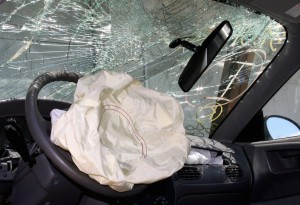Despite a variety of efforts to inform owners of vehicles equipped with deadly Takata airbags to replace the defective components, only 43% of cars and trucks have been repaired.
According to a new report on the progress of the repairs, less than half of the more than 42 million vehicles and 69 million airbags subject to recalls have been fixed. The recalls began more than 15 years ago, but the most significant push began three years ago.
On average, 75% of vehicles with recalls are repaired within 18 months of the action being issued.
The independent monitor tracking the recalls also said in the report that automakers are only about halfway toward a Dec. 31 goal of 100% replacement of older and more dangerous inflators. The inflators, which are made with ammonium nitrate, degrade over time.
(Another 2.7 mil vehicles added to Takata recall list. Click Here to see why the list is likely to keep growing.)
Additionally, warm weather and high humidity climes exacerbate the problem, which can cause the inflators to explode with too much force sending plastic and metal shrapnel into the vehicle cabin with catastrophic results.
Nineteen people have died around the world with more than 180 being injured.
The poor results have come in spite of a coordinated effort by the National Highway Traffic Safety Administration to accelerate the repair process. The federal safety agency began coordinating and phasing in the recalls two years ago, after automakers couldn’t generate the results necessary to satisfy regulators.
The recall is the largest series of automotive recall in U.S. history, involving 19 car and truck makers. It also brought a criminal conviction and fine against Takata and forced the Japanese company into bankruptcy protection.
(For more on Takata’s bankruptcy and sale, Click Here.)
John Buretta, the independent auditor who produced the report, says that as of Sept. 15, automakers have recalled 43.1 million inflators; however, only 18.5 million have been replaced.
Buretta says in his report there is “much room for improvement” in the recalls, but added that the automakers and suppliers building the replacement kits are making better progress toward “developing sound strategic approaches.”
One area that has seen improvement is communication with vehicle owners. Automakers are tapping a wide array of methods for contacting owners including social media, direct mail and even door-to-door canvassing.
They are also providing incentives to owners to bring their vehicles in such as free shuttles, gift cards and mobile repair services. This is helping overcome one of the biggest problems they faced initially which was a lack of replacement parts. However, NHTSA brought in other suppliers, such as Autoliv, and Takata tripled its production capacity eliminating that problem.
(Click Here for more about Takata’s bankruptcy filings.)
NHTSA worked with the suppliers to coordinate the distribution of replacement parts, ensuring they went first to southern states with higher temperatures and humidity. The recalls will be phased in over roughly the next three years.


